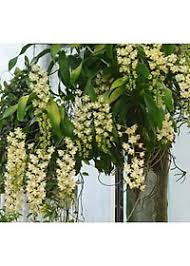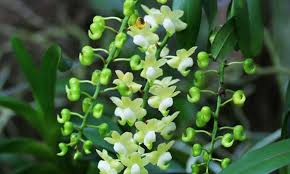
Dancing Lady Orchids, scientifically known as *Oncidium*, are beloved for their striking beauty and unique floral shapes. However, as with all plant cultivation, growing these orchids sustainably is crucial for both the environment and the longevity of the plants themselves. Sustainable practices ensure that your orchids thrive while minimizing environmental impact and conserving natural resources. This comprehensive guide will explore effective strategies for sustainably growing Dancing Lady Orchids, covering everything from soil and potting to water management, pest control, and responsible sourcing.
## 1. Introduction to Sustainable Orchid Cultivation
### 1.1 Understanding Sustainability in Gardening
Sustainable gardening practices involve methods that protect and enhance the environment while fostering healthy plant growth. This includes using eco-friendly materials, minimizing waste, conserving resources, and promoting biodiversity. By implementing sustainable practices, gardeners can create a thriving ecosystem that benefits both the plants and the surrounding environment.
### 1.2 Importance of Sustainable Orchid Growth
Growing Dancing Lady Orchids sustainably is essential for several reasons:
– **Environmental Protection**: Sustainable practices reduce pollution and waste, protecting the ecosystem.
– **Resource Conservation**: Utilizing water, soil, and other resources efficiently helps maintain these precious commodities for future generations.
– **Plant Health**: Healthy growing conditions contribute to robust orchid plants that are more resilient to pests and diseases.
## 2. Selecting Sustainable Materials
### 2.1 Choosing the Right Potting Medium
The choice of potting medium is vital for the health of Dancing Lady Orchids. A sustainable potting mix typically includes organic materials that retain moisture while providing excellent drainage.
#### 2.1.1 Organic Components
– **Bark Chips**: Pine or fir bark chips are popular for orchids, providing aeration and drainage. They break down slowly, reducing the need for frequent repotting.
– **Coconut Coir**: This sustainable alternative to peat moss is derived from coconut husks and helps retain moisture while allowing air circulation.
– **Sphagnum Moss**: Sphagnum moss can be used in combination with other materials to retain humidity. Look for sustainably harvested options to minimize environmental impact.
### 2.2 Selecting Eco-Friendly Pots
When choosing pots for your Dancing Lady Orchids, consider the following options:
– **Biodegradable Pots**: Made from materials like bamboo or recycled paper, these pots break down over time, enriching the soil and reducing plastic waste.
– **Clay Pots**: Clay is a natural material that allows for good air circulation and drainage. Look for pots that are sustainably sourced and produced without harmful chemicals.
## 3. Water Management Practices
### 3.1 Efficient Watering Techniques
Watering is a critical aspect of orchid care, but it’s essential to do so sustainably. Overwatering can lead to root rot, while underwatering can stress the plant.
#### 3.1.1 Using Rainwater
Collecting rainwater is a sustainable way to water your orchids. It’s often free of chemicals found in tap water, such as chlorine and fluoride, making it gentler on the plants.
#### 3.1.2 Implementing a Watering Schedule
Establish a consistent watering schedule based on the orchid’s needs and environmental conditions. Check the potting medium regularly, and only water when the top inch is dry. This practice prevents overwatering and conserves water.
### 3.2 Utilizing Water-Efficient Systems
Consider installing drip irrigation systems that provide precise amounts of water directly to the roots. These systems minimize water waste and ensure that the plants receive adequate moisture without saturating the potting medium.
## 4. Optimal Light Conditions
### 4.1 Providing Natural Light
Dancing Lady Orchids thrive in bright, indirect sunlight. Ensuring that your orchids receive the right amount of light is essential for their growth and blooming.
#### 4.1.1 Using Natural Light Sources
Place your orchids near windows that provide filtered light. If natural light is insufficient, consider using energy-efficient LED grow lights designed for plant growth.
#### 4.1.2 Adjusting for Seasonal Changes
Monitor light levels throughout the seasons and adjust the placement of your orchids accordingly. In winter, you may need to move them closer to a light source to ensure they receive adequate illumination.
## 5. Fertilization Practices
### 5.1 Choosing Organic Fertilizers
Sustainable orchid care involves using organic fertilizers that promote healthy growth without harming the environment. Organic fertilizers release nutrients gradually and improve soil health.
#### 5.1.1 Types of Organic Fertilizers
– **Fish Emulsion**: A liquid fertilizer rich in nitrogen, promoting leaf growth and overall plant health.
– **Seaweed Extract**: Provides trace minerals and stimulates root development, enhancing the orchid’s resilience.
– **Compost Tea**: Homemade compost tea is an excellent way to provide nutrients while enriching the soil microbiome.
### 5.2 Proper Fertilization Techniques
– **Dilution**: Always dilute organic fertilizers to avoid nutrient burn. Follow package instructions for the right dilution ratio.
– **Frequency**: Fertilize your Dancing Lady Orchids every two to four weeks during the growing season, and reduce fertilization in the dormant season.
## 6. Pest and Disease Management
### 6.1 Integrated Pest Management (IPM)
Integrated Pest Management is a sustainable approach to controlling pests and diseases while minimizing harm to beneficial insects and the environment.
#### 6.1.1 Monitoring and Identification
Regularly inspect your orchids for signs of pests, such as spider mites, aphids, or mealybugs. Early identification is crucial for effective management.
#### 6.1.2 Natural Pest Control Methods
– **Beneficial Insects**: Introduce beneficial insects like ladybugs or predatory mites to control pest populations naturally.
– **Neem Oil**: Neem oil is a natural pesticide derived from the seeds of the neem tree. It effectively controls a variety of pests without harming beneficial insects.
### 6.2 Preventive Measures
– **Cultural Practices**: Maintain proper spacing between plants to promote air circulation and reduce humidity, minimizing the risk of fungal infections.
– **Sanitation**: Keep your growing area clean and remove any dead leaves or debris that could harbor pests and diseases.
## 7. Sustainable Repotting Practices
### 7.1 Understanding When to Repot
Dancing Lady Orchids should be repotted every one to two years, depending on their growth and the condition of the potting medium. Signs that it’s time to repot include roots growing out of the pot and deteriorating potting material.
### 7.2 Repotting Techniques
– **Careful Removal**: Gently remove the orchid from its pot, taking care not to damage the roots. Inspect the roots for signs of rot and trim any unhealthy sections.
– **Using Fresh Medium**: Repot the orchid in a fresh, sustainable potting medium that provides the right balance of moisture retention and drainage.
## 8. Promoting Biodiversity
### 8.1 Creating a Diverse Plant Environment
Incorporating a variety of plants in your garden or home can promote biodiversity and enhance the overall health of your ecosystem. Consider pairing Dancing Lady Orchids with companion plants that share similar care requirements.
### 8.2 Supporting Local Ecosystems
By planting native species alongside your orchids, you can attract beneficial insects, such as pollinators, and create a balanced environment. Native plants often require fewer resources and support local wildlife.
## 9. Conclusion
Growing Dancing Lady Orchids sustainably not only contributes to the health of the plants themselves but also positively impacts the environment. By implementing eco-friendly practices in potting, watering, fertilization, pest control, and repotting, you can create a thriving orchid garden that benefits both the plants and the ecosystem.
In addition to enhancing your personal space, cultivating Dancing Lady Orchids sustainably fosters a connection to nature and promotes awareness of environmental conservation. As you nurture these beautiful orchids, remember that sustainable practices can lead to a flourishing garden that is both beautiful and beneficial to the planet. With patience and dedication, you can enjoy the exquisite blooms of Dancing Lady Orchids while contributing to a healthier, more sustainable world.


